#elizabeth simcoe
Explore tagged Tumblr posts
Note
Wait... are you saying that Simcoe was possibly a Bicon, in addition to being a hero of Upper Canada?
That, my friend, I am! Albeit with the usual caveats that there are some things we cannot say for certain.
I think there are hints pointing towards Simcoe having been possibly romantically, or even sexually, inclined towards men as well as women.
Apologies for my tardy reply, but this got a tad long, so please proceed under the cut:
Edward Drewe: "My Dorilas"
The first hint is the poem I was talking about, written by his fellow officer Edward Drewe, whom Simcoe knew since childhood. Drewe wrote the poem as a farewell to Simcoe upon being invalided back home to England early in the Revolutionary War.
For me, the repeated emphasis on the sorrow of parting in elborately dramatic scenes (such as imagining what would happen if Simcoe would die before also returning home, complete with a description of his "mangled corse" [sic, and a bit sick, too]) and particularly the repeated address of Simcoe as "Dorilas" seem to point in that direction.
The lovely and ever helpful @my-deer-friend was able to pinpoint a potential origin for the appellation "Dorilas" from the Tale The Loves of Dorilas and Euanthe, published in the Oxford Magazine in 1774.
Assuming the name is a direct reference to either this particular story or similar stories, due to the personal nature of the poem, my assumption would be that Drewe, complementing Simcoe's Dorilas, cast himself in the role of Euanthe.
This, by the way, is the last paragraph of the story:

"[G]olden shafts" and Venus having "crowned the night when Dorilas the pride of swains enjoyed his beloved Euanthe" does sound quite... Well, they surely weren't just looking at is stamp collection together.
If the appellation "Dorilas" in Drewe's poem indeed does refer to Dorilas and Euanthe, I think that would be a very distinct hint as to how the relationship between Drewe and Simcoe might have looked like.
John André: "an officer whose superior integrity and uncommon ability did honour to his country, and to human nature."
Another man who was very important to Simcoe was John André. They knew each other, and enjoyed spending time together. They were of a similar age and had shared interests. Similarly to André, Simcoe could draw well and was a man not shy of conviviality.
When André was captured, Simcoe approached Clinton submitting a plan for André's rescue which would have included putting his own life on the line that was however refused by Clinton.
Now, I'm perfectly sure I have seen Simcoe's letter to Clinton somewhere, but cannot find it. It seems to exist, too, because the plan to rescue André was also known to Simcoe's biographer, Mary Beacock-Fryer, who makes mention of it, sadly without referencing the original (Beacock-Fryer, Mary: John Graves Simcoe. A Biography, p. 56.).
What I can provide you with however is the assertion, in Simcoe's own words, that he
[...] had given directions that the regiment should immediately be provided with black and white feathers as mourning, for the late Major Andre, an officer whose superior integrity and uncommon abiity did honour to his country, and to human nature. John Graves Simcoe, Journal, p. 152 (1844 reprint).
In his so-called Journal, a work he compiled in order to highlight his own role in the war and political stances which he wrote with the intention to serve as a stepping-stone for his (political) career after his return to civilian life (and half-pay) in England, there are not many hints as to how his relationship with André may have looked like, which, given its nature, makes sense.
He does however highlight, in his Journal and later private letters, how greatly André's death upset him, and allegedly, though I have never found any proof for this, André's self-portrait, drawn at the eve of his execution, was copied by Simcoe's artiscally gifted wife to give to Honora Sneyd, André's former sweetheart.
There are no concrete hints to any relationship in a romantic or sexual sense with André, in any case however, I think it bespeaks their close bond that Simcoe was willing to sacrifice his own life for André, and had the Queen's Rangers add feathers to their hats as a token of respect and rememberance to him.
Mary Anne Burges: Defying Social Expectations
Simcoe was by most accounts a person who was naturally jovial, affectionate and inclined to see the good in everyone; local stories and historical anecdotes about Simcoe highlight his approachable character.
One curious personal relationship was that with Mary Anne Burges, his wife's best friend; the two were a 'package deal', which he knew; legend has it that after she had accepted his proposal, Elizabeth Gwillim, the future Mrs. Simcoe, sent her fiancé to talk to her best friend and promise her that he would never come between them.
How much of this story is true will remain lost to history, but Simcoe had no issues with Burges moving into the vincinity and being a constant visitor. She even became, in the absence of blood-relations, an aunt of sorts to the Simcoe children who would help take care of the four eldest daughters while their parents were away in Upper Canada.
Mary Anne Burges and Elizabeth Simcoe were friends ever since their teenage years and Burges sometimes came to stay with her bestie, who was then living with her maternal aunt Margaret and the latter's husband, Admiral Samuel Graves, whenever her cash-strapped parents considered putting pressure on her to get married already.
Mary Anne Burges remained single for life, carved out a professional existence (albeit an at times precarious one) for herself writing for magazines, had a great interest in the natural sciences and even became a single (foster) mother to an orphaned relation. Here is what she wrote to Elizabeth when a gentleman decided to try his luck with her by way of a surprise proposal:
[...] so I wrote him word that I had more a determination to continue single all my life [...]. Mary Anne Burges to Elizabeth Simcoe, 8 June 1795.
Her refusal to the proposal had nothing to do with the particular gentleman in question; she was simply not interested in men in a romantic or sexual capacity, which she seems to have been very open about. In another letter to her best friend, shortly after the Simcoe's had left for Upper Canada in 1792, she gives an account of a spat between herself and the notoriously quarrelsome Margaret Graves, jealous of the close relationship between her niece and Mary Anne Burges. Margaret Graves mused loudly that friendships between married (Elizabeth Simcoe) and unmarried ladies (Mary Anne Burges) were very improper, because unmarried ladies might ask a married lady about advice regarding her lovers. Mary Anne Burges coldly replied that "[t]hat can easily be overcome by not having any lovers."
Mary Anne Burges remained a trusted friend close with the Simcoe-family for as long as she lived. Given that the Simcoes were very close, and Mary Anne had been around the Graves' house, too, I would guess that Simcoe would have known either from Mary Anne Burges herself or from his wife, that she was resolved not to conform to the common expectations held for women in the day. Despite that, she was allowed a close relationship not only with his wife, but particularly with his children.
To me, Simcoe's relationship with Mary Anne Burges evidences that he was more, for lack of a better word, open-minded than one would expect of an aspiring social climber with politically otherwise conservative leanings in the late 18th century, which may have influenced his view on and willingness to engage in romantic or perhaps even sexual relationships with other men.
Samuel Graves: Simcoe's upbringing
This open-mindedness likely stems from his upbringing between his mother's and his godfather's household. While I sadly know only very little about his mother, I know quite a fair bit about his godfather Samuel Graves.
Graves valued education (and scolded his older brother because he considered his nephews too little educated to successfully make their way in the world), was married to a member of the Bluestocking circle who believed that women should have more legal rights, especially regarding social mobility through education and vocational training as well as allowing married women to hold property in their own name, and allowed Mary Anne Burges to stay in his home whenver she required an escape from her home life.
Even more interesting is that due to a severe case of malaria contracted while serving abroad as a young man, he had grown infertile. He knew this, and was open about it to his family. Taking this into account, his marriages defy the contemporary socio-religious expectations somewhat as they could never produce any offspring; his two marriages were, from the pieces of evidence I have, likely for love.
His second wife, Elizabeth Simcoe's aunt Margaret, née Spinckes, appears to have been firm on never wanting any children of her own due to having watched her sister die in childbirth, which, coupled with her aversion to giving up her substantial fortune to a husband, had kept her from marrying so far; looking at her marriage to Samuel Graves, it seems that she not only trusted him with her property, she was also happy to have sexual relations with him, some light allusions to this apparently very delctable part of married life she left behind in letters.
Conclusion:
It was in this at the second glance rather surprising environment that Simcoe grew up in, and that may have influenced his personal development, and perhaps instilled in him an acceptance of people not conforming to social expectations, which may have influenced his possible relationships with men such as Edward Drewe and perhaps even John André.
Simcoe's acceptance of Mary Anne Burges as a close friend to his wife and daughters (and to himself, too), who by modern terminology would likely fall under the umbrella term "queer", shows that throughout his life, he was accepting of people who, especially regarding personal and potentially sexual relationships, defied social expectations.
How his own relationships with other men may have looked like concretely, and how the people involved would have perceived, termed and described them might sadly be forever lost to history; for a great analysis of terminology and (what we today consider to be) queerness in an 18th century context, I will link this excellent post by @my-deer-friend.
Especially Edward Drewe's potentially sexually underpinned poem may suggest that a relationship going beyond a romantic friendship between him and Simcoe may have existed.
I think that in Simcoe's case, no prior evaluation of his friendships with men of a similar age prior to his marriage has taken place yet because firstly, most scholarship on him was written in the 19th/early 20th century when queer history was, to put it mildly, not exactly a priority, and secondly, because his very happy, monogamous marriage (about which he wrote poetry containing such great lines as "[...] shall my Eliza with true passion burn") and eleven (!) children do not instantly suggest any attraction to other men on his part.
A further, more in-depth analasys would be a desideratum on my part, especially because I believe there is some basis for it meriting further research.
#ask#ask reply#john graves simcoe#elizabeth simcoe#samuel graves#margaret graves#mary anne burges#queer history#history#18th century
39 notes
·
View notes
Text
For #LearnAboutButterfliesDay:

"Montreal, June 1792. The Black as rich as velvet; the inside of the above butterfly." #SciArt by Elizabeth Simcoe (English, 1762-1850). Identifiable as a female Eastern Black Swallowtail (Papilior polyxenes).
#animals in art#animal holiday#european art#illustration#Learn About Butterflies Day#butterfly#butterflies#lepidoptera#women artists#women’s history month#natural history art#scientific illustration#sciart#swallowtail#eastern black swallowtail#species ID#Elizabeth Simcoe#British art#18th century art#colonial art
52 notes
·
View notes
Text
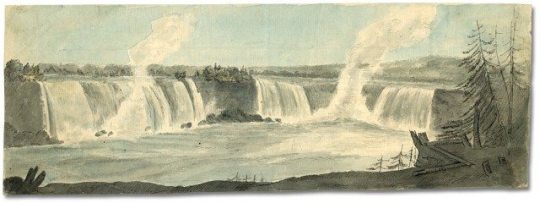
Elizabeth Simcoe (Canadian, 1762-1850) Niagara_Falls (1792)
13 notes
·
View notes
Text

information
basics
full name: Elizabeth Irene Riley {{Birth-Certificate: Elikapeka Ailine Alohaekauneikahanuola'Ilikea'wahine Riley}}
nicknames / aliases: Beth, Apples, Konachino, Jelly Bean {{the nurse shark}}
height: 5 foot even
age: 27-35 {verse dependant}
spoken languages: English, Pidgin, French, Latin, Spanish, Basic/some: Russian, German, Greek, Japanese, Mandarin, Kikongo {Kituba}, Masalit
physical characteristics
hair color: deep chestnut/mahogany brown
eye color: green/honey brown {central heterochromia iridum}
skin tone: sand/olive with warm undertones { "deep autumn"}
body type: delicate/petite {ectomorphic/triangle}
dominant hand: left
posture: straight, graceful, poised
scars: The shark bite scar/muscle atrophy/shortened tendon {right leg}
tattoos: sea turtle with the Hawai'ian island chain on its shell, with a hibiscus {left hip} {eventually the tree of life as above/so below near the bottom of her neck/between her shoulder blades} She has three sub-dermal studs just inside the arch of her hip.
birthmarks: freckles around her chin, across her nose, sharp 'little' teeth
most noticeable features: Wide doe-eyes, 'fangy' smile, nose crinkles when she does so unguarded/genuinely.
childhood
place of birth: Pearl City/Honolulu, O'ahu, Hawai'i. {for Turn: Brooklyn, New York}
siblings: Andrew Riley, Jayden Morgan
parents: The Admiral, Iwalani Kahananui {Riley} Stern
adult life
occupation: ER Nurse/ER Doctor {verse dependant, might be NYPD or SHIELD agent} {for Turn: Wealthy Socialite}
current residence: Verse dependent {for Turn: Philidelphia, Boston, NYC} close friends: this is an entire blog roll roster of my beloved mutuals, so verse dependent? {For Turn: Ben and Samuel Tallmadge, Caleb Brewster, Anna Strong, John Simcoe, Malcolm Baker}
relationship status: Verse dependent. Beth doesn't so much date as she lurks, closely. Waiting for all parties involved to tire out and just move in.
children: Beth is incapable of having children, but loves everyone else's. {Turn: None...yet.}
criminal record: various juvenile charges for destruction of property, vandalism, and the like. All neatly sealed and never to be spoken of again.
vices: entirely too fond of a glass or six of wine in the 'evenings'. workaholic.
sex and romance
sexual orientation: demi-sexual {{I would say she leans towards heterosexual but the body isn't exactly a concern for her, so long as she likes/feels connected to the person}}
turn-ons: Intelligence, kindness, wittiness, passionate, idealism, honesty, empathy, caring for other people, the environment, animals.
turn-offs: Cruelty, abuse {physical/verbal/of power, etc}, lack of respect, refusal to accept boundaries, one night stands
love languages: physical touch, acts of service, quality time
relationship tendencies: Beth tends to be slightly oblivious when it comes to relationships. She is avidly keen in getting to know people, cannot help but to try and nurture them in what seem to be natural ways as much as she's able to. She doesn't experience sexual attraction until well after feeling bonded to someone. This can lead to many mixed signals. When it comes to love/sex/romance, Beth tends to be a little naive and extremely trusting,and that has always broken her heart in the past. Beth doesn't do one night stands, or casual hook-ups, though she doesn't judge others for them. Some people might consider her clingy.
miscellaneous
hobbies to pass time: surfing, dancing, knitting, reading, gardening, card games, chess. {Beth is amusingly aggressive when it comes to competitive games/sports}
mental illnesses: Beth lives with bipolar disorder, shows signs of childhood trauma, and tends toward fear of rejection/abandonment self confidence level: Beth has all the self esteem of a banana slug outside of a medical-treatment setting. ~*~ tagged by: my darling M @honorhearted tagging: Tell me about your muses!
8 notes
·
View notes
Text
I'M RELATED TO BENJAMIN TALLMADGE!!
My mom's been into genealogy and so I decided to use her account to take a look at some of my favorite people, not expecting much, but GEEZE. The ancestry has been tracked all the way back to early colonial America and OH BOY.
Just a few other relatives from colonial times...
Annie Lewis, wife of Caleb Brewster.
Anna Smith Strong.
Robert Townsend.
Abraham Woodhull.
Elizabeth Gwillim, wife of John Graves Simcoe.
And...
Alexander Hamilton.
Seriously, guys, go to your local library and ask about resources that county and state libraries have when it comes to genealogy. There is SO MUCH out there.

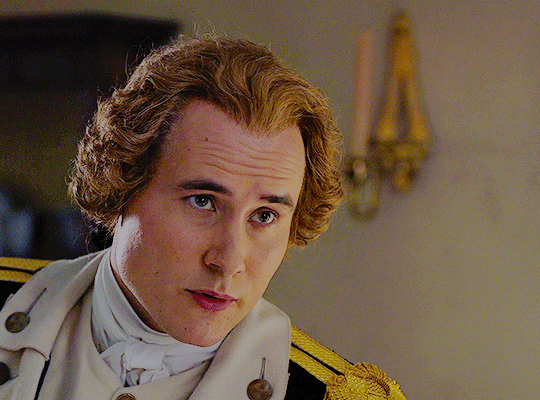
#turn amc#alexander hamilton#amc turn#benjamin tallmadge#hamilton#revolutionary war#anna strong#abraham woodhull#caleb brewster#john graves simcoe#robert townsend
10 notes
·
View notes
Text
Birthdays 9.22
Beer Birthdays
Lord Chesterfield; English statesman (1694)
Alfred Vinzenz Werthmueller (1835)
George Kennth Hotson Younger (1931)
Carlos Sanchez (1958)
Dave McLean (1969)
Five Favorite Birthdays
Bilbo Baggins; Hobbit character
Frodo Baggins; Lord of the Rings character
Michael Faraday; English scientist (1791)
Joan Jett; rock singer, guitarist (1958)
Tatiana Maslany; Canadian actor (1985)
Famous Birthdays
King Sunny Ade; Nigerian reggae singer (1946)
Scott Baio; actor (1960)
Eric Baker; English activist, co-founded Amnesty Int’l (1920)
Toni Basil; pop singer (1943)
Elizabeth Bear; author and poet (1971)
Shari Belafonte; actor (1954)
Maurice Blanchot; French philosopher (1907)
Andrea Bocelli; Italian singer-songwriter (1958)
Debby Boone; pop singer (1956)
Barthold Heinrich Brockes; German poet (1680)
Harold Carmichael; Philadelphia Eagles WR (1949)
Nick Cave; rock musician (1957)
Neil Cavuto; journalist and author (1958)
Ellen Church; 1st airline stewardess (1904)
Dave Coverdale; rock singer (1951)
Quintin Craufurd; Scottish author (1743)
Babette Deutsch; poet (1895)
Ashley Eckstein; actress (1981)
Will Elder; illustrator (1921)
György Faludy; Hungarian poet & author (1910)
Tom Felton; English actor (1987)
Grigory Frid; Russian pianist & composer (1915)
Philipp Nicodemus Frischlin; German mathematician, astronomer & poet (1547)
Theodore Hook; English composer (1788)
John Houseman; actor (1902)
Bonnie Hunt; actor (1964)
Ruth Jones; Welsh actress (1966)
Anna Karina; actor (1940)
Brian Keene; novelist (1967)
Charles Keeping; English author & illustrator (1924)
Allan "Rocky" Lane; voice of "Mr. Ed" (1909)
Tommy Lasorda; Los Angeles Dodgers coach (1927)
Paul Le Mat; actor (1945)
Katie Lowes; actress (1982)
Matthäus Merian; Swiss-German engraver & cartographer (1593)
Ian Mortimer; English historian & novelist (1967)
Paul Muni; actor (1895)
Catherine Oxenburg; actor (1961)
Peter Simon Pallas; German zoologist & botanist (1741)
Rupert Penry-Jones; English actor (1970)
Sue Perkins; English comedian, actress (1969)
Saul Perlmutter; astrophysicist, astronomer (1959)
Rosamunde Pilcher; English author (1924)
Billie Piper; English singer, actor (1982)
Arthur Pryor; trombonist, composer (1870)
Paolo Ruffini; Italian mathematician & philosopher (1765)
Martha Scott; actor (1914)
Elizabeth Simcoe; English-Canadian painter & author (1762)
Bill Smith; clarinet player & composer (1926)
Theodore Clement Steele; artist (1847)
Michael Torke; composer (1961)
Ken Vandermark; saxophonist & composer (1964)
Charles Waterhouse; painter (1924)
Fay Weldon; English writer (1931)
Billy West; actor (1892)
Ray Wetzel; trumpet player & composer (1924)
1 note
·
View note
Text
...John Graves and Elizabeth Posthuma Simcoe, probably
An AITA from 1700s Britain would be like. how do ye reddit today I (46m) took my wife (45f) and our children (1m) (2f) (7m) (5m) (18f) (12m) (22f) (8m) (3 months m) (9f) (14m) (17f) (16f) (13f) (3m) (4m) (15f) (18m) (22f) (19f) (11m) (21m) (6f) (10m) (16f) (20m) (23m) (24f) (25f) to the shops and
1K notes
·
View notes
Note
What other turn characters have you thought of writing? Do you think you could write a character like Simcoe, Caleb, Townsend, etc?
Full list of my canon/semi canon, American revolution/TURN muses is as follows, see original character list for that specifically. In that list it’s by historical era.
— Benjamin Tallmadge, Elizabeth Schuyler-Hamilton, Angelica Schuyler-Church, Mary Floyd Tallmadge, Sarah Livingston, Nathan Hale, Abigail (Strong), Lola (LeRoy), Anna Strong, Mary Woodhull, Esther de Berdt Reed, Philomena Cheer, John André & William Wilberforce.
I’ve thought of writing Simcoe, I just can’t write characters who operate in that frame of mind well. By which I mean, TURN! Simcoe is cartoonishly evil (affectionate). I think @johngravessimcoe and @honorhearted do excellent at their portrayals and nuancing their on the surface, very “good” vs “bad” characters. Cause the truth is, the American war of independence was a political war of colonial power vs colonial power as much as a philosophical and ideas war of information and neither side was innocent in it. If I wrote Simcoe it’d be closer to historical RPF, as opposed to his TURN! adaptation. Note that actual Simcoe was a badass and a super reformed abolitionist basically his entire life, just like his peer, the philanthropist and redcoat, William Wilberforce.
I won’t lie, I’ve mostly considered writing chaotic bi disaster Alexander Hamilton, not cause he’s my favourite founding father/founding father adjacent. But because his chaotic, dandy energy is unmatched and also because there’s a mountain of evidence to suggest, strongly, bisexuality. Even by 18th century standards when that was in fashion, ala, the Duchess of Devonshire’s household and her affairs across the gender spectrum.
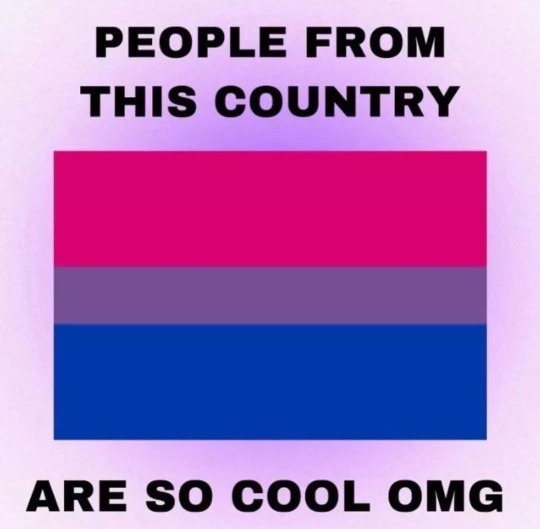
For an excellent Caleb Brewster, I must direct you to: @firstmategod. for Bradford: @curseconsumed, and for Abraham Woodhull & Edmund Hewlett: @sharp-teeth-and-wide-grins / @cabbxges-and-kings, for Alexander Hamilton: @fromnevis & @adcthamilton & for Washington: @historiavn 💕

2 notes
·
View notes
Text
Great site with letters from Elizabeth Simcoe and images she drew that portray life in the period of the loyalists in Upper and Lower Canada. https://ift.tt/JHnAd38 Posted by @paulrombough.bsky.social - Paul Rombough @ LEARN https://ift.tt/y0mKfGZ
—
0 notes
Text
Please tell me if you're seeing this, too. Today I found out that the Archives of Ontario digitised more of the pictorial material in their Simcoe family fonds collection, and among tons of sketches and watercolours by the lifelong prolific Elizabeth and some that weren't in her style, but may have been works by friends or her children, there are these three silhouettes:
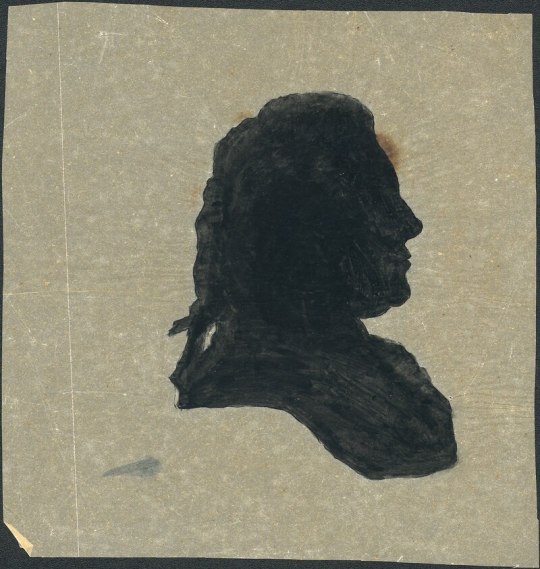
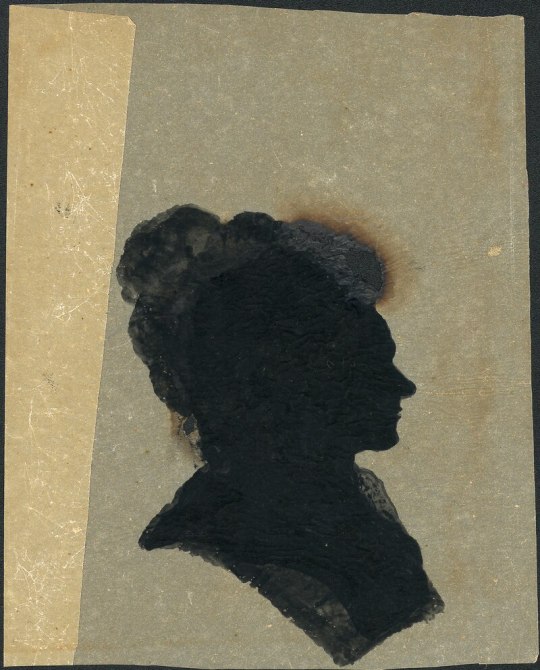
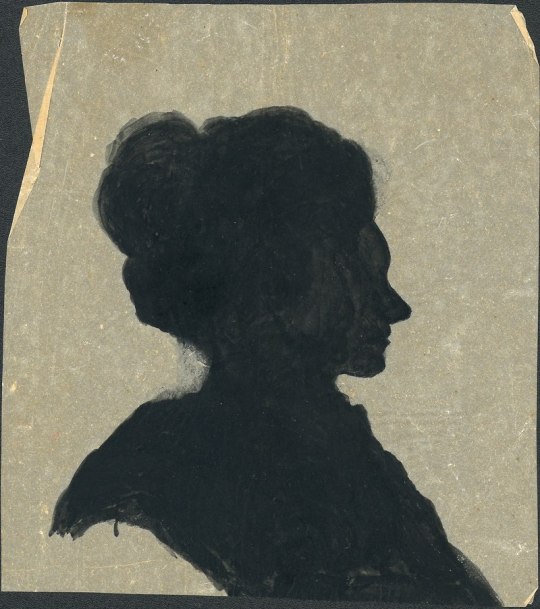
To state the obvious, the sitters seem to have been portrayed by the same artist, and were a group of two women and a gentleman.
The two women, wearing a simlar bun-like hairstyle, also share similar facial features; both have the same chin and nose. Only the volume of the hair, the softer line between chin and neck in the first woman and the suggestion of a sheer shawl imply that she may be older than the second lady.
The gentleman is rather portly with more than a hint of a double chin and wears a queued wig.
Now, I was curious as to who these people could be, and...
Could they be Samuel Graves, Margaret Graves and Elizabeth Simcoe?


The hairline of the wig rising from the forehead at an almost right angle and chin seem very similar. I'm not quite sure about the nose, but that might have to do with the shadows in the portrait.

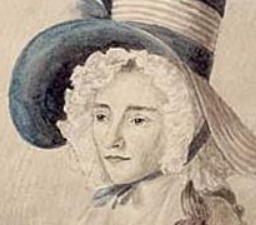
Same pointy chin, same rather remarkable nose.
Sadly I have, save for an almost cartoonishly exaggerated doodle of her as an old woman, never seen another portrait of any sort of Margaret Graves.
However, assuming that I could be correct and these are Samuel and his adoptive niece, then it would only make sense for the second woman to be Margaret. Besides, Elisabeth had, save for two paternal aunts, no female relatives of whom you'd expect any sort of facial resemblance. Why would any of the two paternal aunts be depicted with Elizabeth's maternal aunt's husband?
If I'm correct here, and the three are The Three, then these silhouettes were probably made by Mary Anne Burges during one of her extended stays with the Graves' whenever she needed to escape her somewhat troublesome home life. If Mary Anne is the artist, these would have had to have been made prior to 30 December 1782, when Elizabeth (then still Gwillim) married her uncle's godson, a certain John Graves Simcoe. In that case, the Archives of Ontario would be wrong by a full decade, having dated the silhouettes to the 1790s.
Now, I could be wrong of course, because naturally I want my theory to be true, but if I were correct, that would be quite exciting.
Please do tell me what you think!
#samuel graves#margaret graves#elizabeth simcoe#18th century#hisitory#british history#silhouette#archives of ontario#r rambles
44 notes
·
View notes
Photo
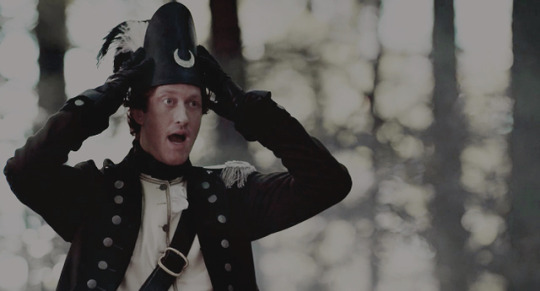
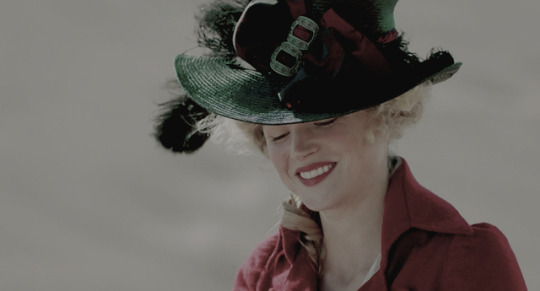
What strange creatures brothers husbands are! - Jane Austen
#queue found me#john graves simcoe#elizabeth simcoe#simcoe x eliza#simcoe: visage#simcoe: memories#mine*#simcoe: my dear wife
6 notes
·
View notes
Text
I'M RELATED TO BENJAMIN TALLMADGE!!
My mom's been into genealogy and so I decided to use her account to take a look at some of my favorite people, not expecting much, but GEEZE. The ancestry has been tracked all the way back to early colonial America and OH BOY.
Just a few other relatives from colonial times...
Annie Lewis, wife of Caleb Brewster.
Anna Smith Strong.
Robert Townsend.
Abraham Woodhull.
Elizabeth Gwillim, wife of John Graves Simcoe.
And...
Alexander Hamilton.
Seriously, guys, go to your local library and ask about resources that county and state libraries have when it comes to genealogy. There is SO MUCH out there.


#turn amc#alexander hamilton#amc turn#benjamin tallmadge#hamilton#revolutionary war#anna strong#abraham woodhull#caleb brewster#john graves simcoe#robert townsend
0 notes
Text
BoB: Chapter 7-Dark Nights
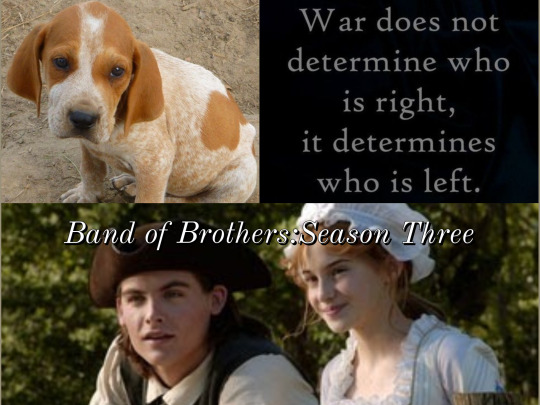
Zipporah ran through Setauket erratically, shouting, her hair coming out of its bun and her normally kempt dress askew.
“Help! Help! Someone help!” She cried, tears streaming down her face as many of the townspeople stopped and watched the dramatics. As expected, Captain Simcoe came tumbling out of the tavern, a mug of ale in his hand, followed closely by his soldiers.
“Ms. Strong, what in the heavens is wrong?” He asked as he gave her a once over, from her disheveled hair, to her rumpled clothes.
Summary: Ben gets some religious advice from his little brother and Charlie and her dad finally see the mental horrors that war has wreaked on Levi's mind.
A HUGE thank you to @tallmadgeandtea and @ms-march for sticking by me throughout my writer’s block and just general life craziness right now. Love ya, guys.
You can find the entire chapter HERE. And the entire Band of Brothers series can be found HERE.
#turn amc#turn: washington's spies#BoB#BoB: S3#levi tallmadge#charlie harris#zipporah strong#john graves simcoe#dr harris#benjamin tallmadge#Elizabeth Walker#American Revolution#amrev#fanfic#fanfiction
14 notes
·
View notes
Note
"Tuesday, then." She smiled, averting her gaze as to not seem overly eager. Tuesday. She would have a picnic with him on Tuesday and the mere thought of it was enough to send butterflies fluttering through her stomach. When was the last time she'd looked forward to the future? Had she ever done so? Her cheeks felt hot and, if she wasn't so occupied with conversation, she might've slipped outside to rid herself of the nerves.
The girl's voice almost makes Anne flinch, but she turns to face the stranger with a smile, practiced and perfected. Colonel Simcoe? Her brow twitches in confusion, but she doesn't say anything. The name doesn't ring a bell and she's far too overstimulated to ask about it. And, to be honest, she was too distracted staring at his with admiration to form a coherent question, anyway. Instead, she watched the interaction between the two play out, a small wave of jealousy rolling through her chest. She smiled politely, staying silent as she normally did.
Unless she was with the children, Anne had found it a better practice to wait until she was spoken to before opening her mouth. It prevented misunderstandings and anything that could lead to a termination of her position. Silent governesses were trusted governesses. But being a fly on the wall was a hard habit to break, and, though she didn't exactly know what to say, the last thing she wanted to do was seem rude in front of John's family. If they thought she was a bad influence, they might not let her accompany him anywhere, and such an idea was enough to make her heart sink.
She notices him stiffen as his cousin speaks and it takes all the strength in her not to reach out and take his hand. She knew he hadn't been the most excited to attend the soiree in the first place, so she has a feeling he's experiencing similar emotions as she was. Out of place, alone in a crowded room. Though Anne doesn't know him very well, she can't imagine someone like John being a social butterfly. And she didn't mind. She liked that about him. He was solitary, like her, but that didn't mean others wouldn't try to pull him into the social scene.
It takes her a moment to realize that the chipper girl in front of them was the Elizabeth he'd written about. Anne hadn't really put much thought into what the female would look like, but she's surprised by how pretty she is.
"Miss Eliza, it's a pleasure to meet you. I've heard much about you in letters, so it's lovely to finally put a face to the name." Anne curtsied before shooting a quick look to John. Why did she feel like this was a test? Was it? "Oh, the unicorn prose was positively delightful. I have no idea how you managed to locate such a thing, but I have to tell you that my youngest pupil, Frances, is an avid admirer of unicorns, so she was elated to hear that such a thing existed. Even if she was rather discontented by the ending."
Her eyes flick between the two of them, smile growing slightly each time her gaze fell on John. At the mention of an auction, Anne's brows furrowed and she turned back to Eliza. "No, he hadn't mentioned an auction. Not that he had a chance to with all my blabbering. We were just catching up when you arrived. But, by the mention of unicorns, or lack thereof, I gather you mean a horse auction? Unless my observation skills betray me."

"You think so? I always considered myself a blue person."
He was quite certain Anne could wear a dress of Hessian fabric and still catch the attention of half the eligible bachelors in this very room...
"Me? I don't know why anyone would be eager to meet me, but I'd be happy to say hello to her," John lifted his glass to his lips in an attempt to mute his smirk, "Though, if I'm allowed to be rather blunt, I wouldn't mind spending the night with you..." he nearly choked on his drink, instead managing to sputter and gulp down the harsh amount of lemonade shot to the back of his throat, ignoring the sour sting rising to his nostrils, "The evening, I mean," she looked mortified -- he weakly coughed, and he half wondered if he was capable of tampering the laugh threatening to escape him - good God... "The party. The event. Spending time... I wouldn't mind spending time with you."
Biting hard on the inside of his cheek, he managed to speak when she was finished,

"Tuesday's perfect," though he honestly couldn't keep half the details of this trip straight in his head so perhaps Tuesday wasn't so perfect after all; it was no matter, he'd ask Elizabeth and his godmother to make an exception... and practically as soon as he thought of his cousin, he heard her bubbly voice over the crowd.
"Oh, my dearest Colonel Simcoe," he turned, watching Elizabeth approach them; her dance card swung gracelessly around her wrist, her face flush from her latest invitation to the dancefloor, "there's a gentleman over there claiming he knows you. Claims he worked with you, actually... well more like you worked for him," she laughed, not asking for permission as she plucked his drink from his hand, finishing the last swallow and returning the empty glass, "General Arnold, he says his name is."
John stiffened, deciding in that moment not to appraise where his cousin had just walked from. It seemed worse, running into former colleagues here; he wanted to forget the colonies, but there the past was, always lingering around him.
His cousin looked on the verge of laughing, "Do all you lot have bad legs then?"
Fighting the urge to roll his eyes, he ignored her quip, turning back to Anne, "My cousin, erm..." had he called her his cousin in his letters; he couldn't remember - the relationships were always confusing, unreasonably so, "this is the Miss Elizabeth I wrote about."
"Eliza Gwillim," she corrected definitively, "A pleasure," and when she turned toward Anne, a look of recognition crossed her face despite never seeing the other woman before, "Oh, are you the Miss Wynter. It's good to meet you," she grinned broadly, "Really, you must tell me what you thought of the unicorn prose. I'm still rather proud of myself for locating that. I suppose my cousin is telling you all about the auction then. Granted, there won't be any unicorns for sale, though if we glue a horn to their heads, it's the next best thing. Of course, that doesn't mean our Colonel here will allow the horn to stay."
37 notes
·
View notes
Photo







The art of Elizabeth Gwillim Posthuma Simcoe
Source: Dictionary of Canadian Biography
34 notes
·
View notes
Note
Top 5 Graveses!
My Deer Friend, that is a fun ask!
Samuel "Sam" Graves (1713-1787). Tough on the outside, very soft on the inside, his personality has captured my research interest. Often portrayed as a nepotistic old choleric (which to some degree he was) in especially older literature on the American Revolutionary War, the man below the public persona of the admiral was the exact opposite. A caring man who appears to have been well liked by his sailors and the local people near his home, he was surprisingly open-minded when it came to what we might call women's rights, the importance of giving your children an education (something he openly chastised his brother about in letters, finding his nephews had not received enough schooling), and by all I was able to learn about the family, very good with young people. His personal tragedy was that he was childless due to a medical complication he was aware of, but he filled this void with his brother John's children and his second wife Margaret's orphaned niece, Elizabeth, who would take very much after Samuel, developing an interest in technology and ships. What never fails to strike me is how he helped protect Elizabeth's best friend Mary Anne, who may fall under the term queer, given she stated during her lifetime that she had no interest in men, from a forced marriage.
Margaret Graves (1728-1808). "Mrs Admiral", feared by many, loved ardently by her husband. So much so that rumour had it that it was she who wore the trousers in their relationship. A tough lady who was independently wealthy and had never planned on marrying at all to remain in control of her fortune, it took her all of ca. 6 months to decide that she wanted Samuel by her side permanently. She was by all accounts difficult, outspoken to the point of often deliberate rudeness, and one of the first bluestockings, being a frequent visitor to Elizabeth Montagu's London salon. In her sixties, she caused a stir in Bath for dancing at balls, which was frowned upon due to her age. She did not care.
John Graves Simcoe (1752-1806). Is it cheating? I don't think so. But he was named for Samuel Graves, and called "Infant Graves" by the same in a letter written to young Simcoe's father around the time of John Graves' christening. I found the Graves' through Simcoe, when many years ago I watched Turn: Washington's Spies and mostly remained watching on account of the delightfully evil ginger menace, John Graves Simcoe. The question "he can't have been that bad, can he?" (spoiler: he was absolutely not, rater the opposite, really) led to a research rabbit hole that ended with me finding out about Simcoe's supportive quasi-family which he found in his godfather Samuel, who helped raise him from the time he lost his father at age seven on, and supported his godson well into his thirties. Samuel viewed him as part of the family, and therefore, he can make this list!
Jane Graves (1666-1767). The mother of Samuel and his siblings, her own life appears to have been quite interesting from what little information we have. She seems to have married comparatively late, and to a significantly younger man at that; she was 46 or 47 when Samuel, her youngest, was born. When her husband died, she must have cared for Samuel's inheritance, and raised her son by herself. Looking at her life span alone, she must have been a very interesting person to talk to, given she lived to 100 or 101, a period spanning from the year of the Great Fire of London to the year the Townshend Acts were passed and Joachim Murat was born.
Richard "Dick" Graves (1757-1836). The enfant terrible of the family, living largely off his uncle's benevolence and will to promote him in the Navy. Badly educated, bad with money and so spectacularly bad with women that Elizabeth, his uncle's niece by his wife, loathed to even be in the same room as him (which ended Samuel's hope of getting the two involved with each other). "Dick" as the family called him with very likely the same undertone as in the famous Jane Austen quote on the late naval officer Dick Musgrove in Persuasion, had so little going for himself that the family sincerely hoped he would marry a rich woman, as that was his only chance of finding a settled life. He was, as they called it "shown" around at social events for that purpose. He did manage to bag an heiress, but their life together was unhappy, full of finanical struggles as both spent more money than they had, and assorted fights with Aunt Mrs Admiral, the Simcoes, the Admiralty and other assorted people. He even agreed to be the second in a duel once, while also being a Justice of the Peace. He must have been a troublesome man, but somehow strikes me as a little interesting for that matter.
#ask reply#ask game#samuel graves#margaret graves#elizabeth posthuma simcoe#john graves simcoe#jane graves#richard graves#18th century#history
12 notes
·
View notes